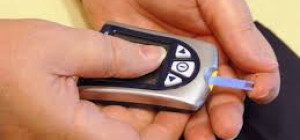Altitude sickness (also called as mountain sickness) is a major risk for mountain climbers. If the onset of the ailment is ignored, it may be harmful, or in the worst case, even fatal. It is caused when a mountain climber gains altitude too quickly, not allowing the body adequate time for adjusting to diminished oxygen and variations in air pressure, and leads to hypobaric hypoxia (scarcity of oxygen that reaches the body’s tissues).

In cases that are severe, a build up of fluid occurs inside the brain, lungs or both. At an intermediate altitude of 1,500 to 2,500 meters above the sea level, it is unlikely to get altitude sickness, although possible. One can get acute altitude sickness after spending at least 4 hours at an altitude of above 2,000 meters. When one ascends to heights above 2,500 meters, a wide range of symptoms can be triggered including vomiting and headache.
The risk of altitude sickness is greater for men than women, the reasons for which are unknown. Please note that being fit and young does not lower the risk of altitude sickness, and simply because you have not faced the sickness in past, does not imply that you have immunity for the condition in the future climbs. The sole certain way of prevention is taking ample time to ascend.
Altitude Sickness Symptoms:
The initial symptoms of mountain sickness are:
- Vomiting
- Nausea
- Dizziness
- Appetite loss
- Insomnia
- Lack of coordination
- Drop in performance
- Lethargy
- Headache
Severe Altitude Sickness:
Two main kinds of severe altitude sickness are there:
1. High Altitude Pulmonary Oedema (fluid inside the lungs)
2. High Altitude Cerebral Oedema (fluid inside the brain)
In most of the cases, both the conditions take place simultaneously. An individual affected by pulmonary oedema may get drowned in case too much fluid is filled in their lungs.
Severe altitude sickness symptoms are:
- Inability to walk along a straight line or sit up
- Irrational behavior like refusing to acknowledge the symptoms
- Frothy sputum or sputum tinged pink with the blood of damaged lung tissue
- Frequent coughing due to fluid in lungs
- Nails and skin tinged blue because of oxygen deficiency (cyanosis)
- Heart palpitations
- Breathlessness
Treatment of Altitude Sickness:
If you experience mild altitude sickness symptoms, you should not ascend any higher for a minimum of 24 to 48 hours.
Most of the cases would improve over this time. However, it may be helpful if you:
- take rest until you feel better
- do not smoke
- drink lots of fluid (but not alcohol)
- do not exercise
Always tell the people you are traveling with about how you are feeling, even if the symptoms are mild. This would let them become more aware of severe sickness signs, like irrational behavior, in case you experience them.
Descending to Lower Altitude:
If you experience mild symptoms of mountain sickness, which do not go way by 24 to 48 hours, the best step would be descending by a minimum of 500 meters (about 1, 600 feet). Climb again only after your symptoms have disappeared completely. Your body would acclimatize after about 2 to 3 days, and your symptoms are likely to disappear.
In case your symptoms are severe or are worsening, it is recommended that you descend by the maximum height possible immediately. If not treated quick, severe altitude sickness may be fatal. Seek medical help immediately once you reach a lower altitude.
How Hyperbaric Oxygen Therapy (HBOT) Helps in Altitude Sickness:
Hyperbaric Oxygen Therapy (HBOT) employs specially designed rooms or chambers, which are capable of withstanding high pressures. At sea level, air comprises 21% oxygen, whereas HBOT can supply up to 100% pure oxygen.
HBOT floods the body of an individual with oxygen and helps in relieving the symptoms of mountain sickness. The administration of oxygen is done with a portable oxygen cylinder through a hood or facemask.
Increasing your intake of oxygen with a portable hyperbaric chamber or bottled oxygen, can help temporarily improve some altitude sickness symptoms. Portable hyperbaric chamber is a chamber in which an individual is enclosed, and then air is pumped into it fully. After about 1 to 2 hours of the treatment, the symptoms of altitude sickness are likely to improve significantly. The therapy’s effect is equivalent to descending to about 2,000 meters (about 6,500 feet).
Although HBOT or oxygen treatment can help improve mountain sickness symptoms, it is not a substitute for descending to lower altitude. In case you experience severe symptoms or symptoms getting worse, always descend, even if you have received oxygen treatment.
Never use medications for altitude sickness, or oxygen therapy for continuing an ascent, once you have experienced symptoms. The results can be fatal.
Besides mountain sickness, HBOT has been reported to be effective in various other medical conditions. The therapy is still under study, and researchers are trying to determine the effectiveness of the therapy in different health conditions.







